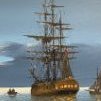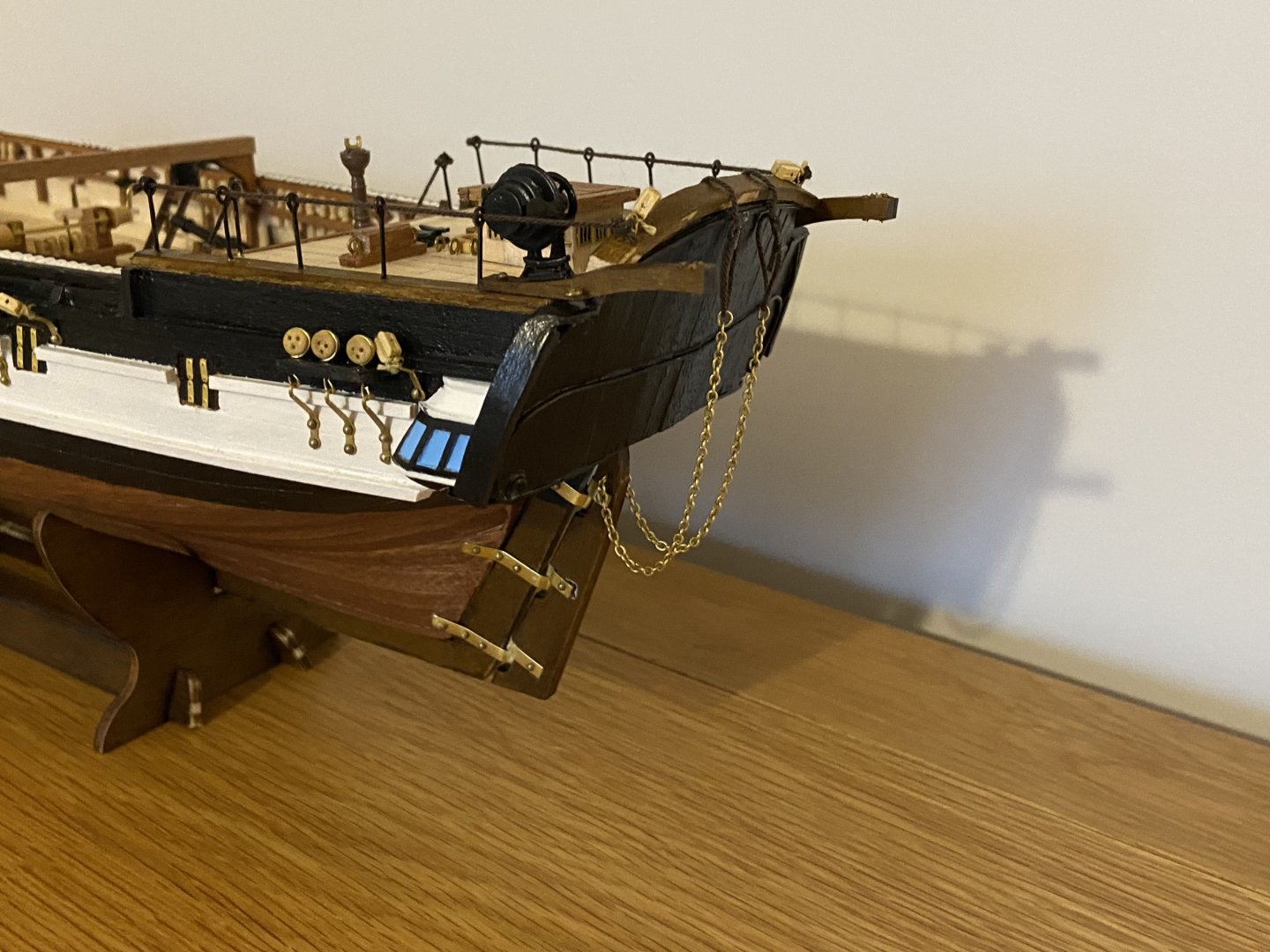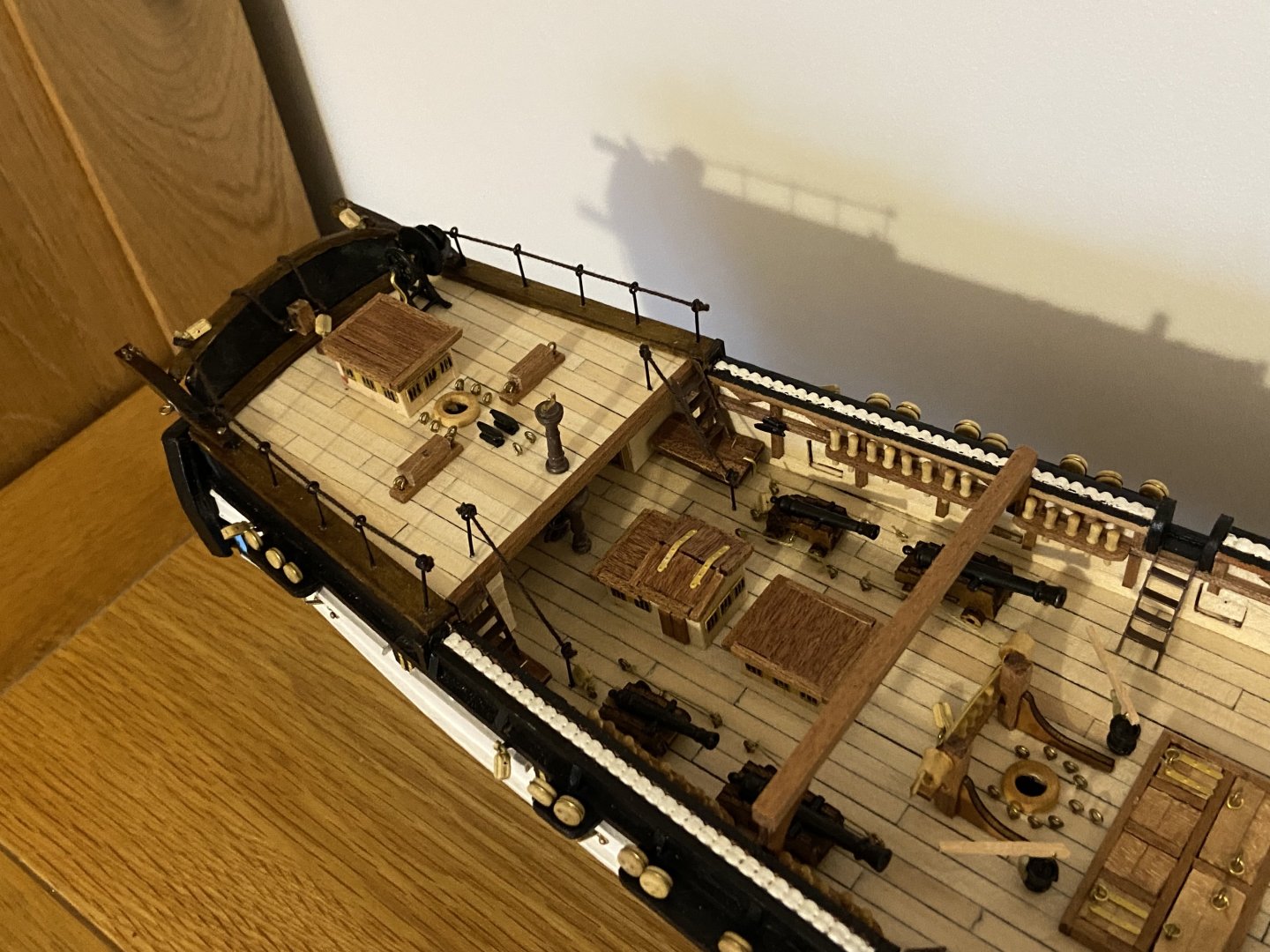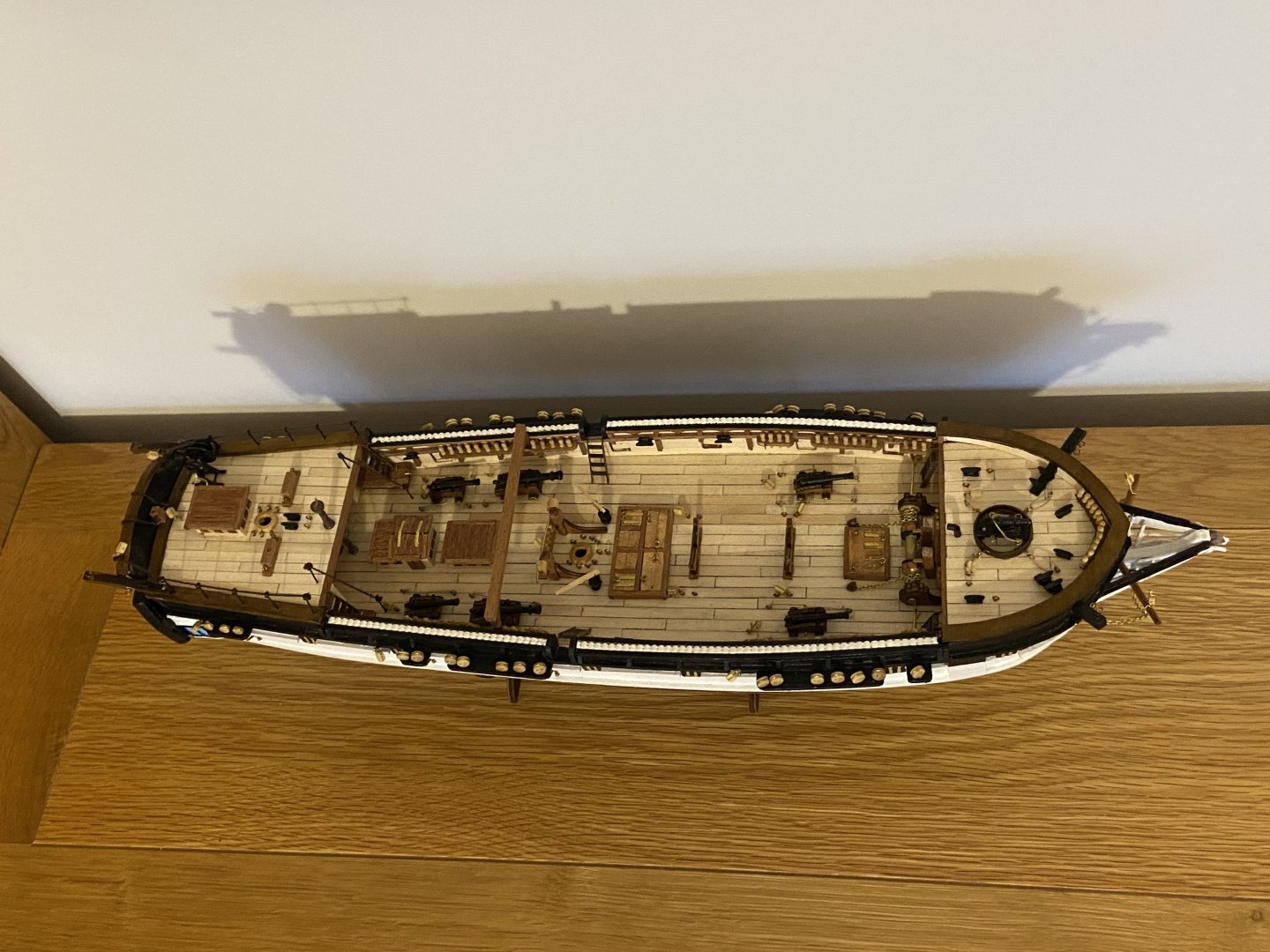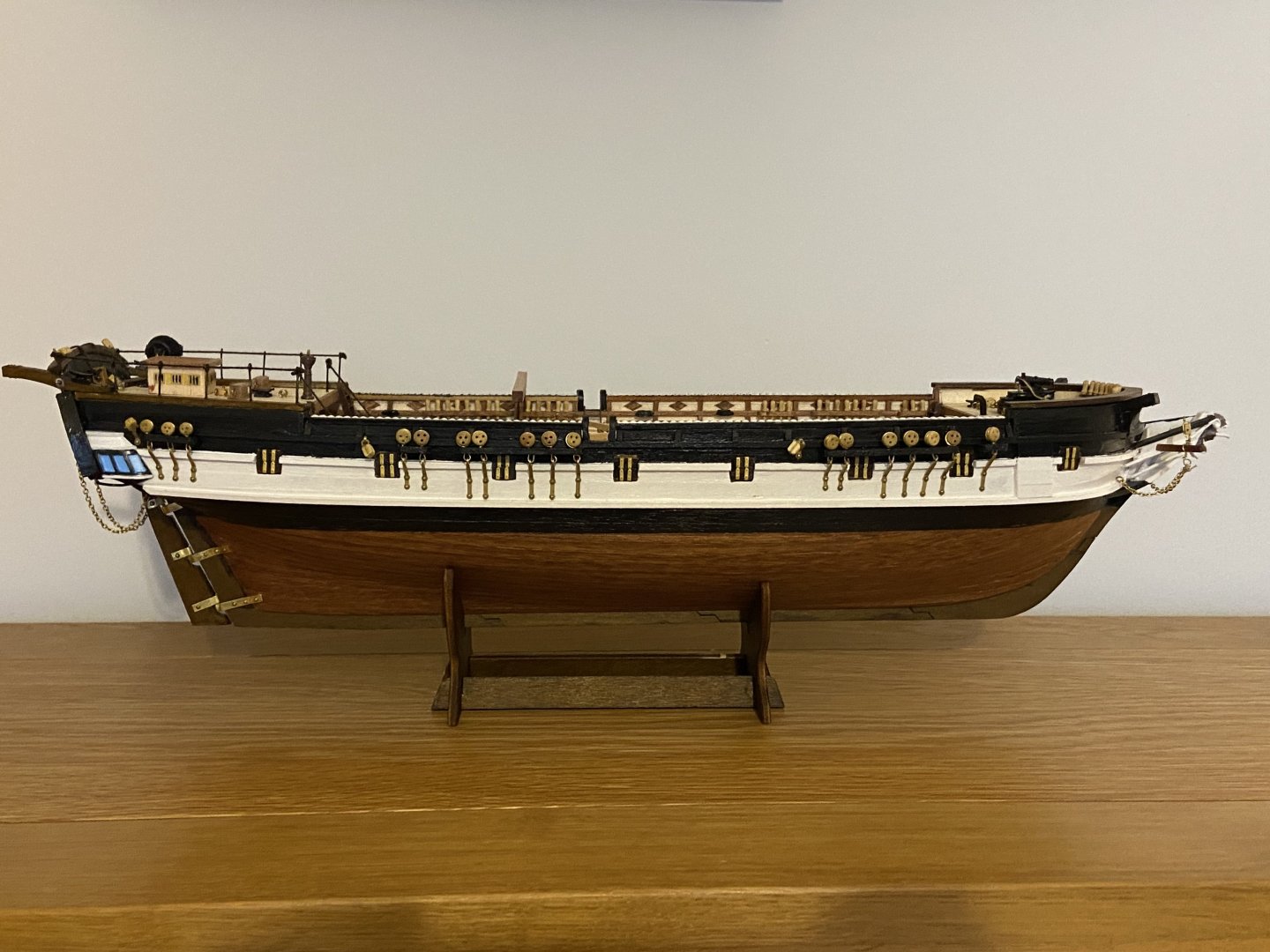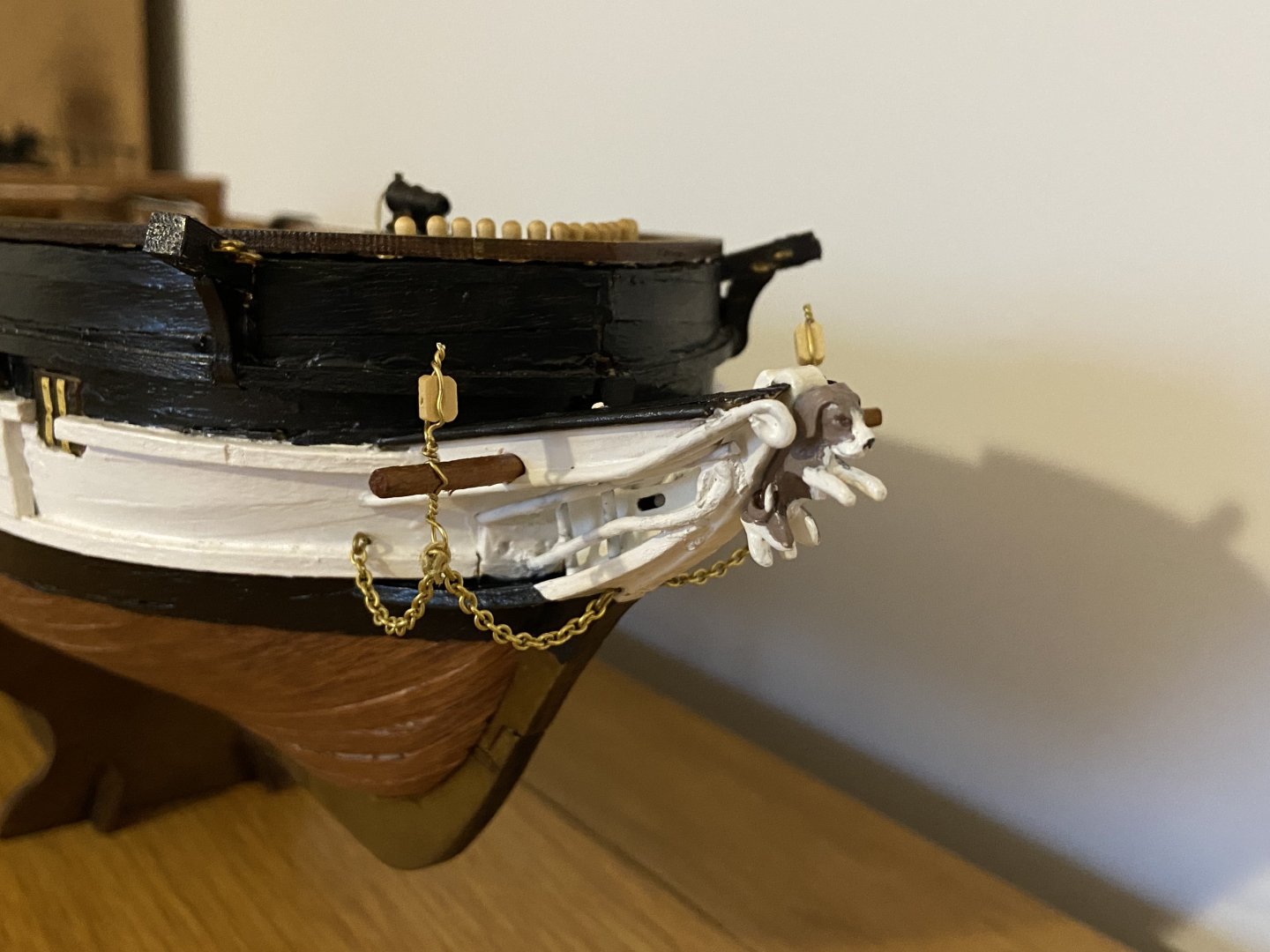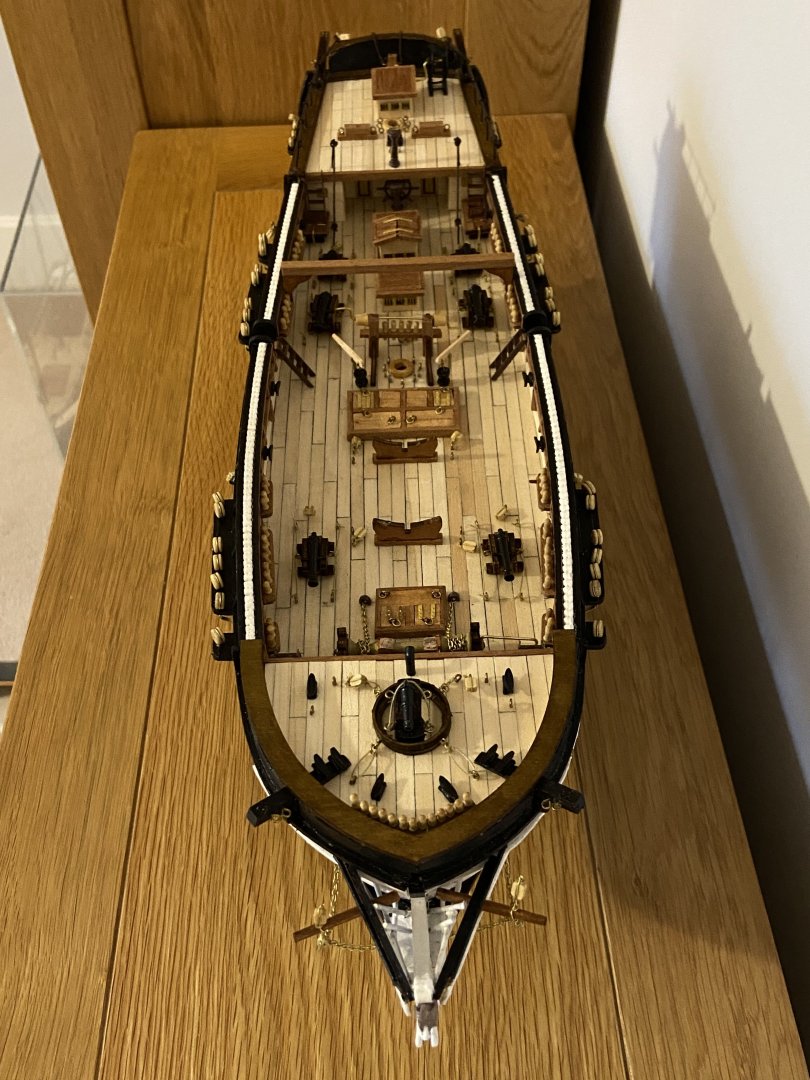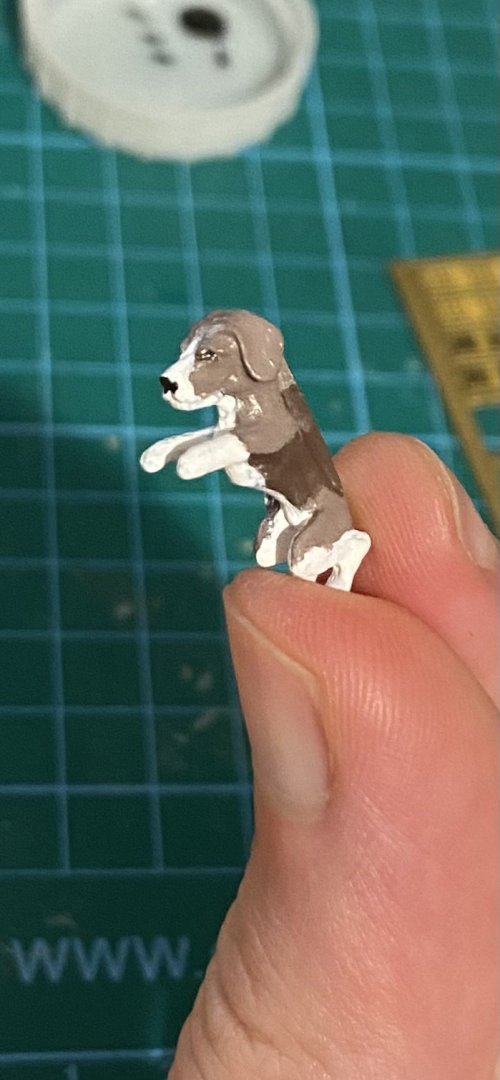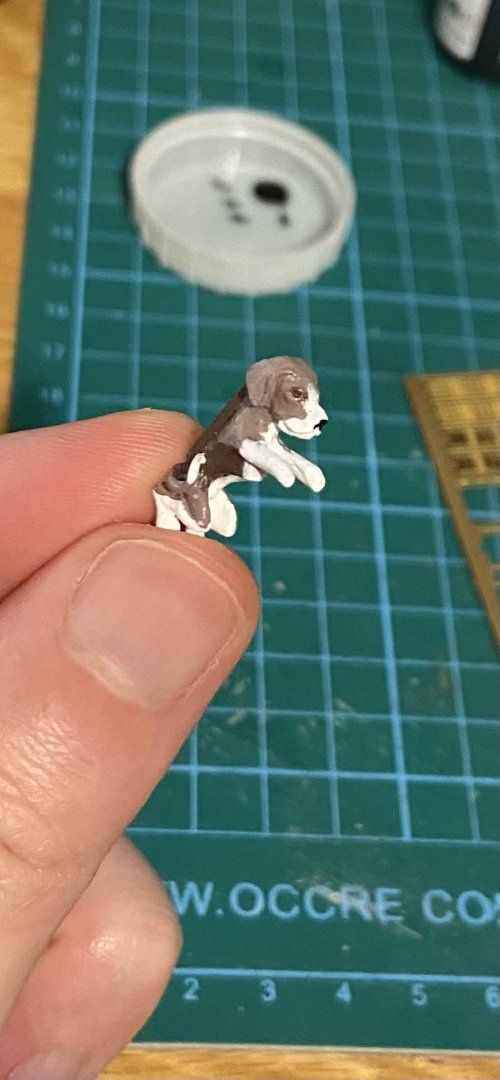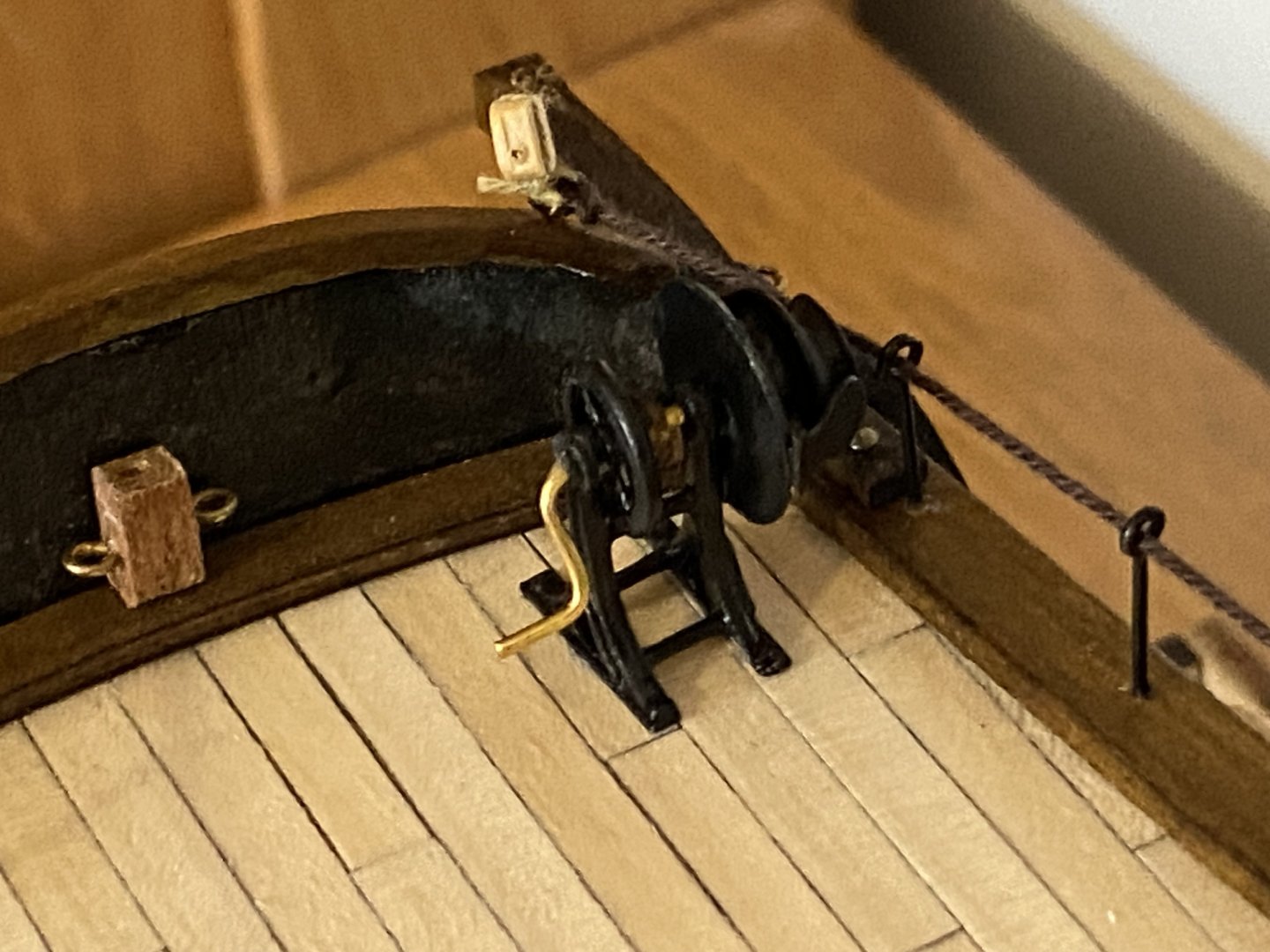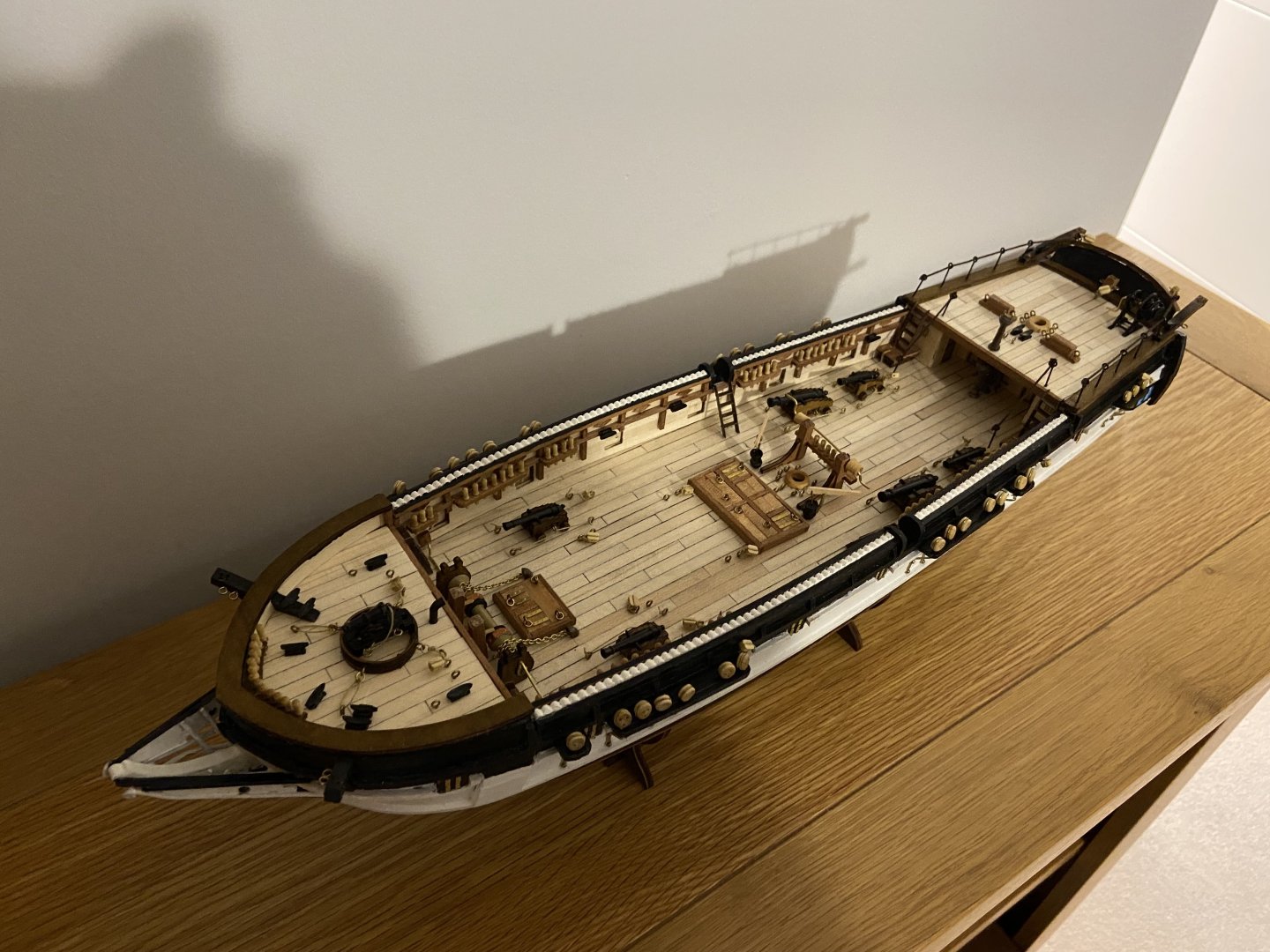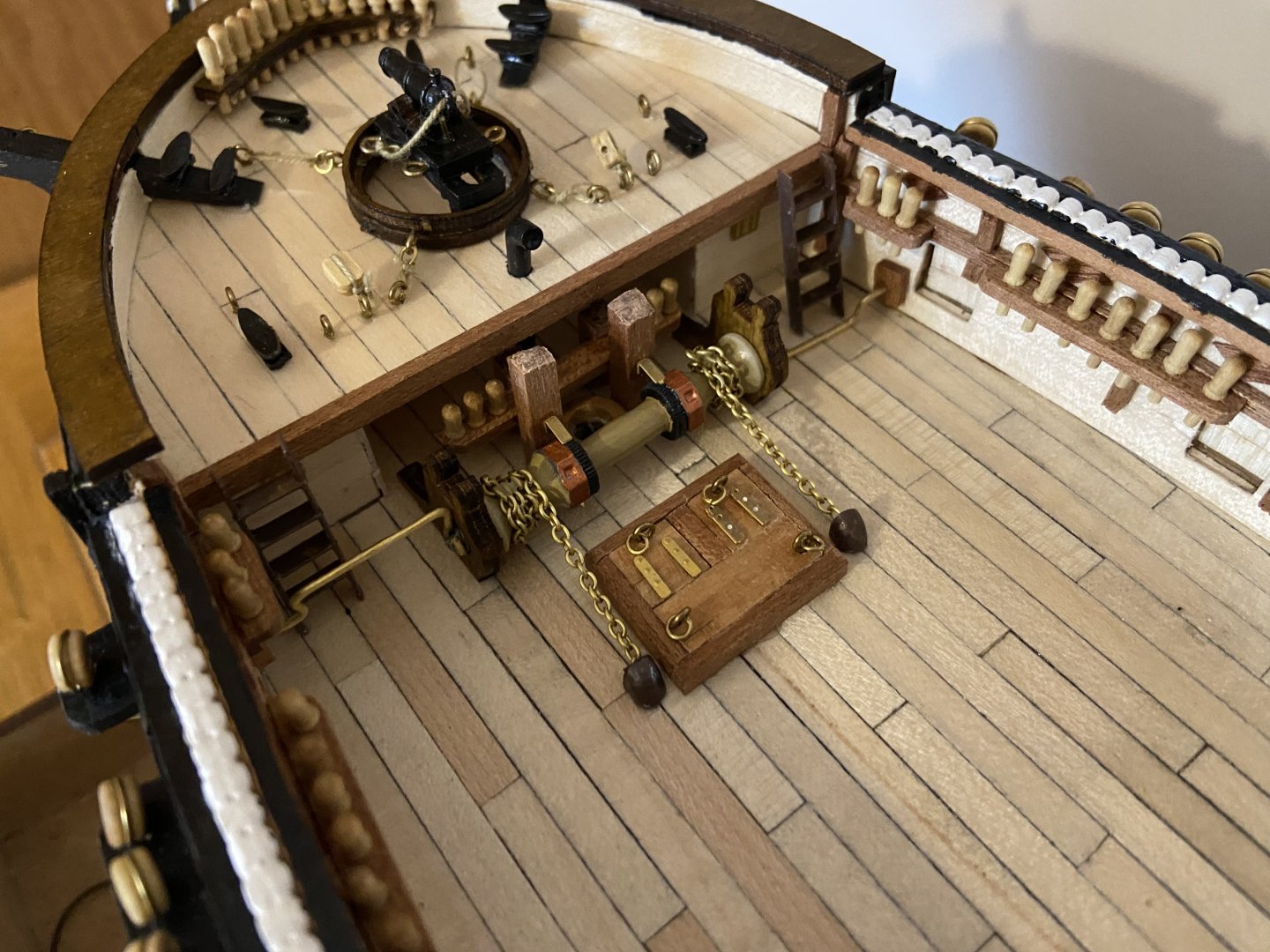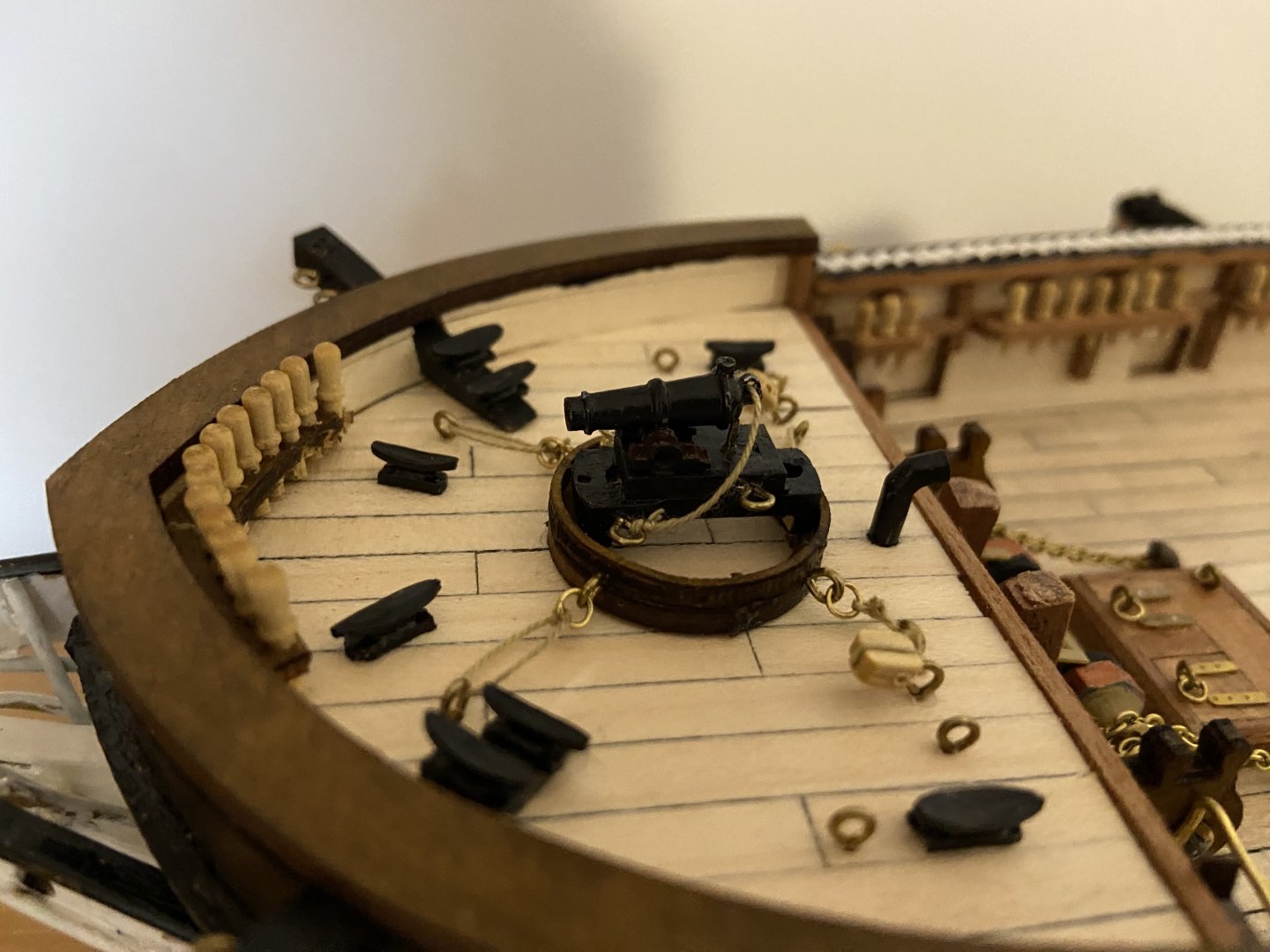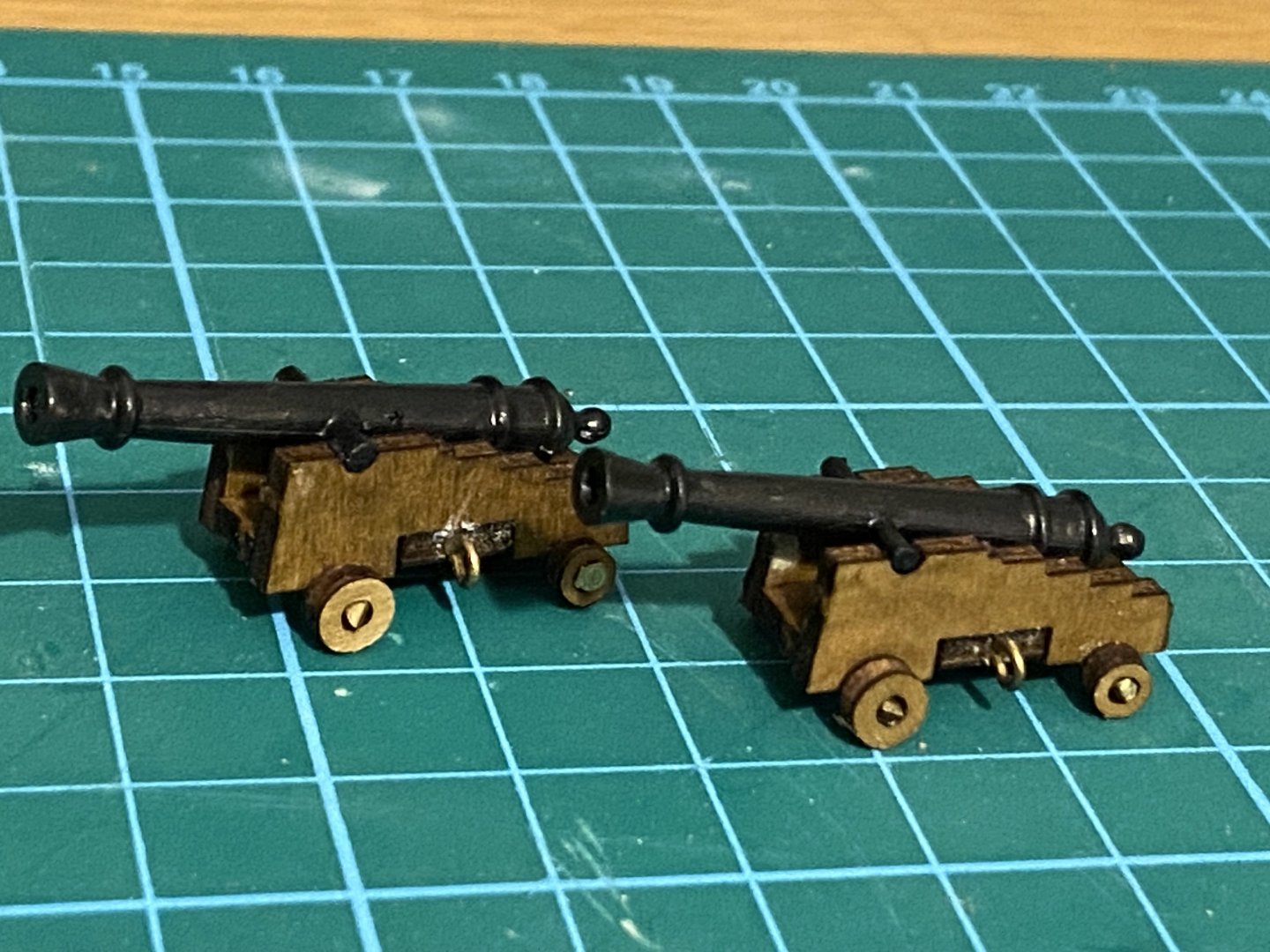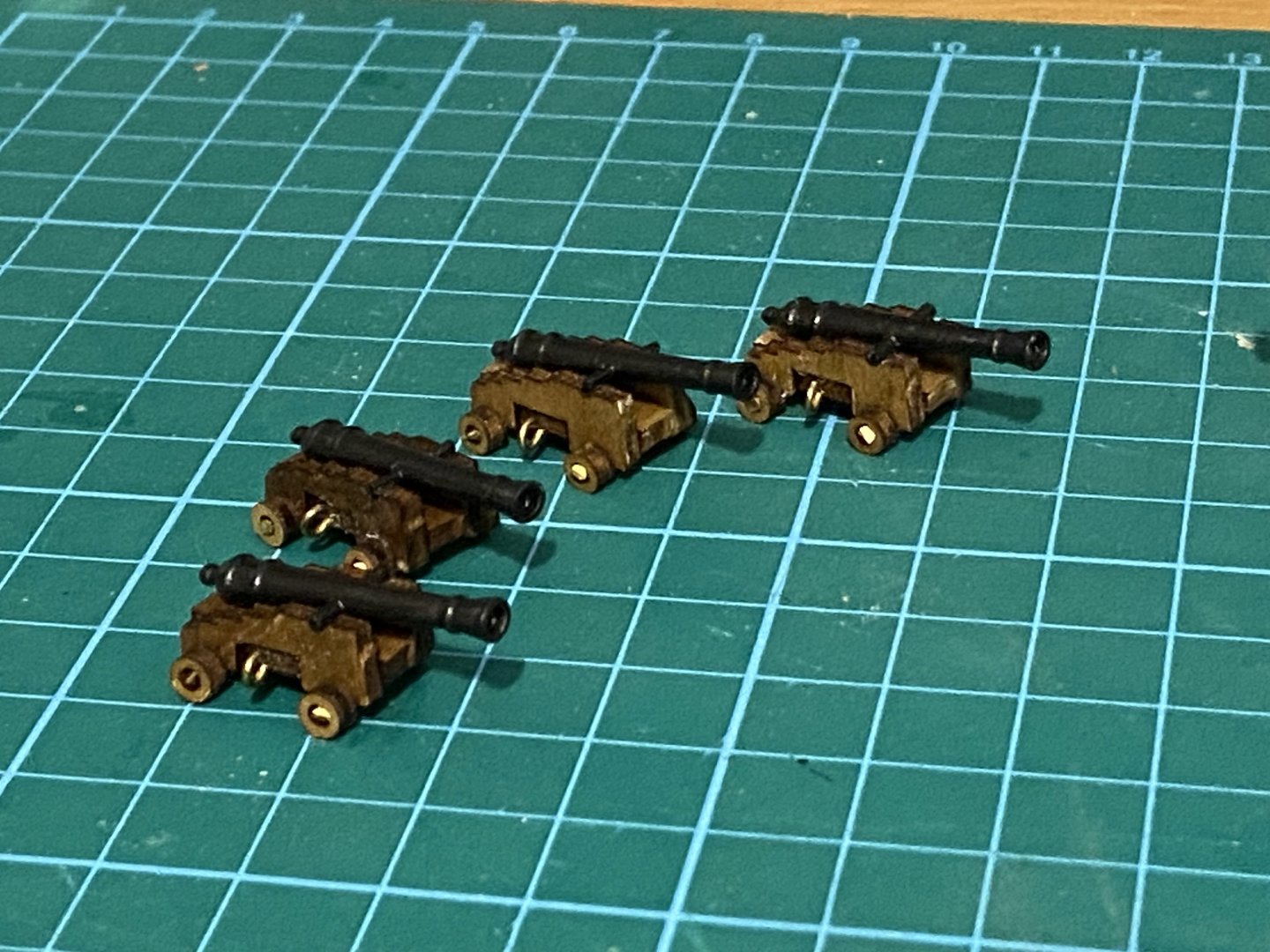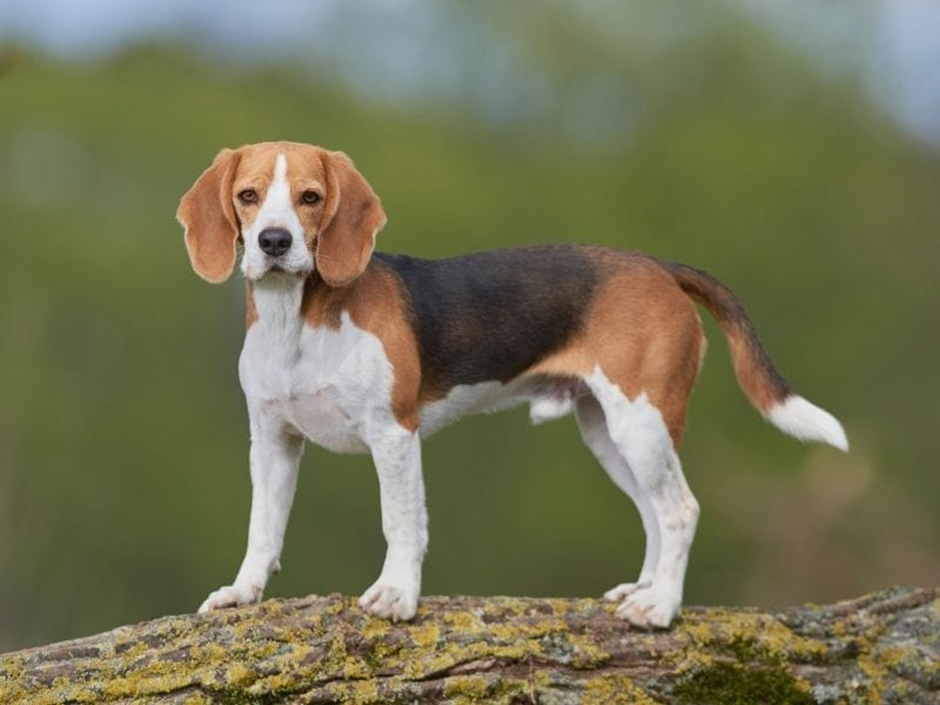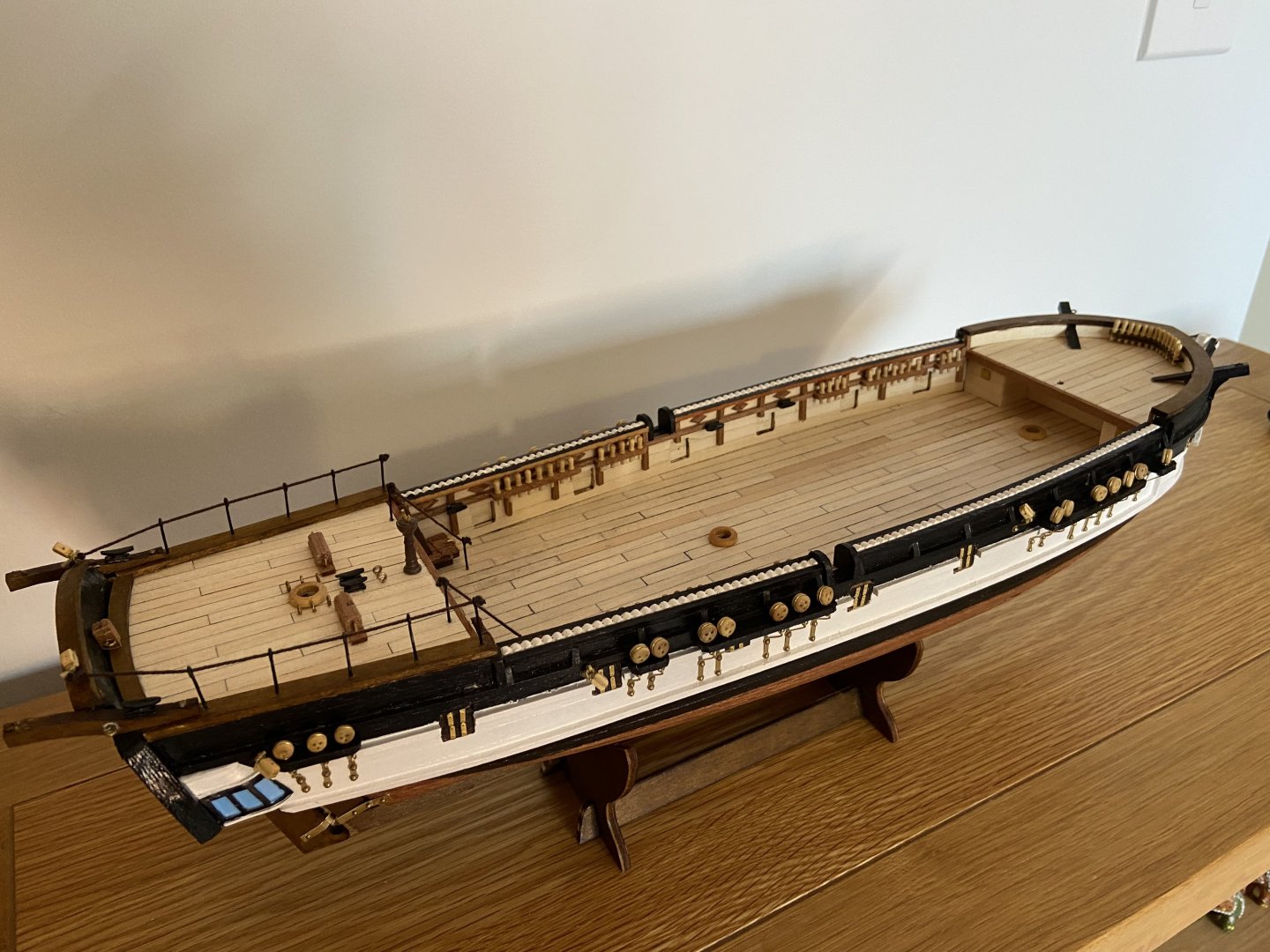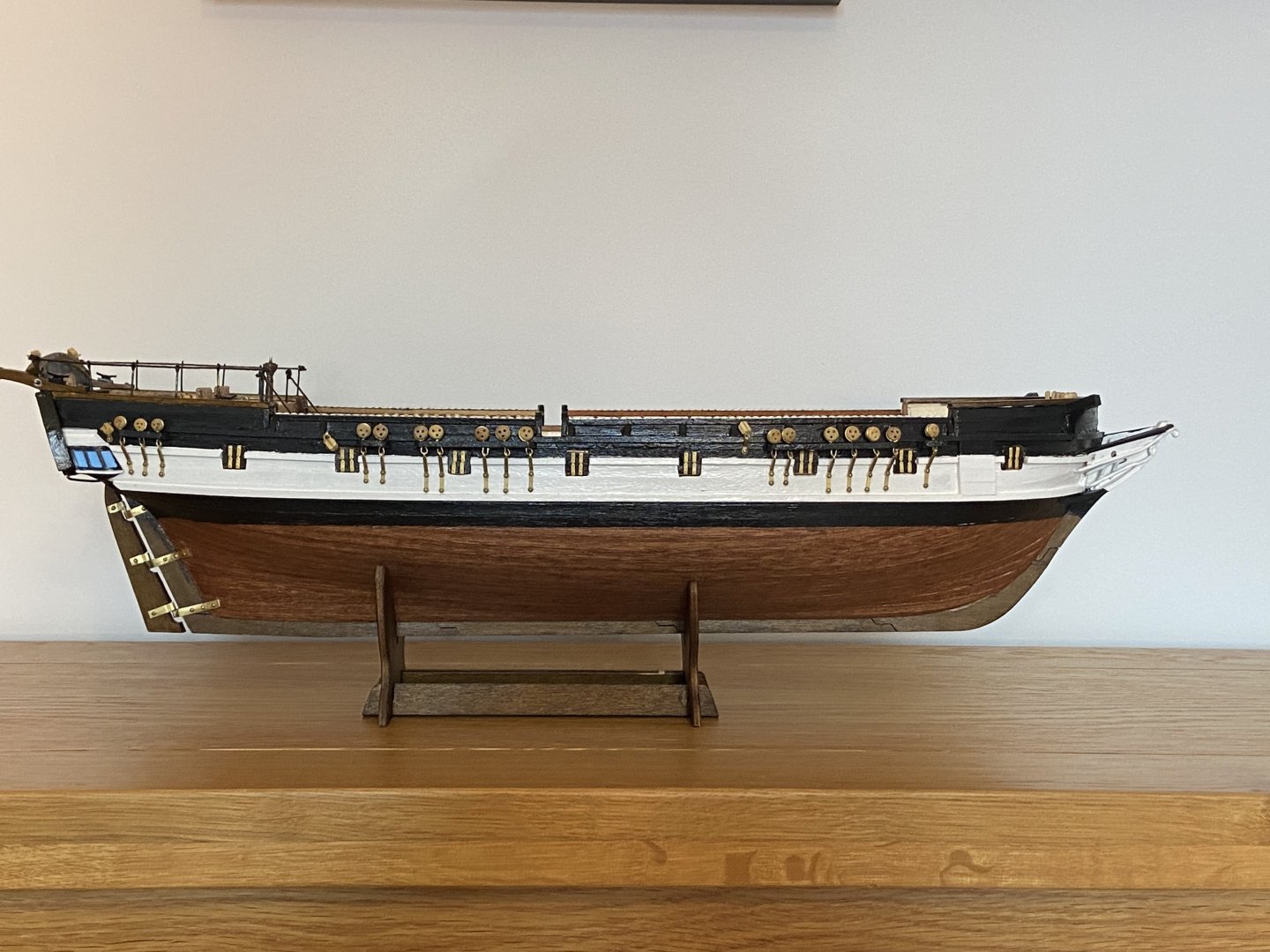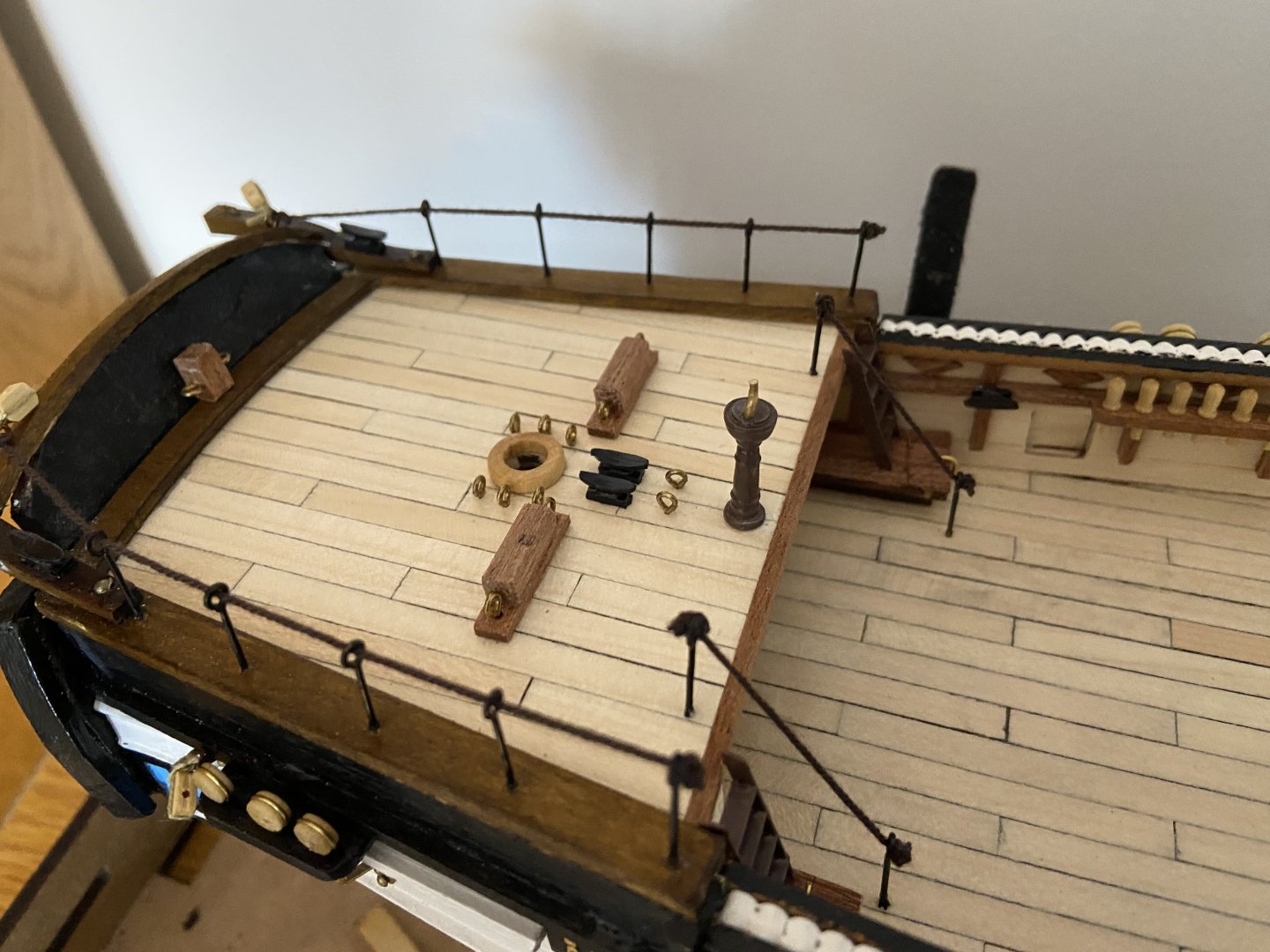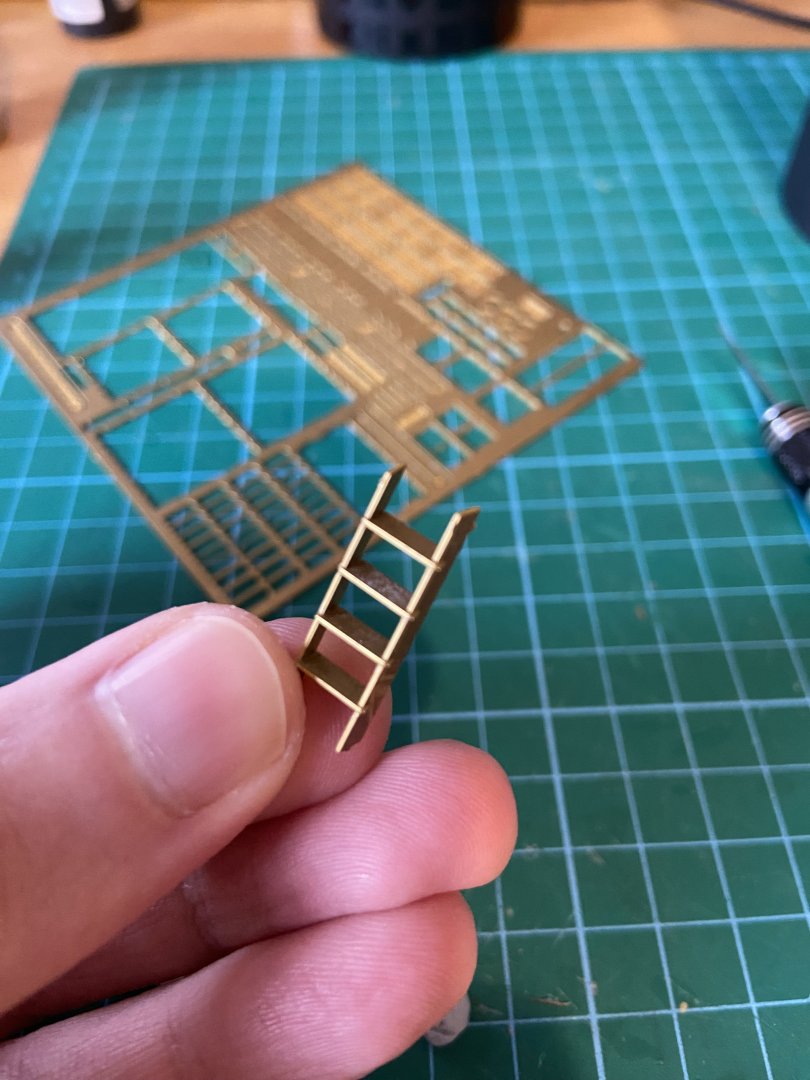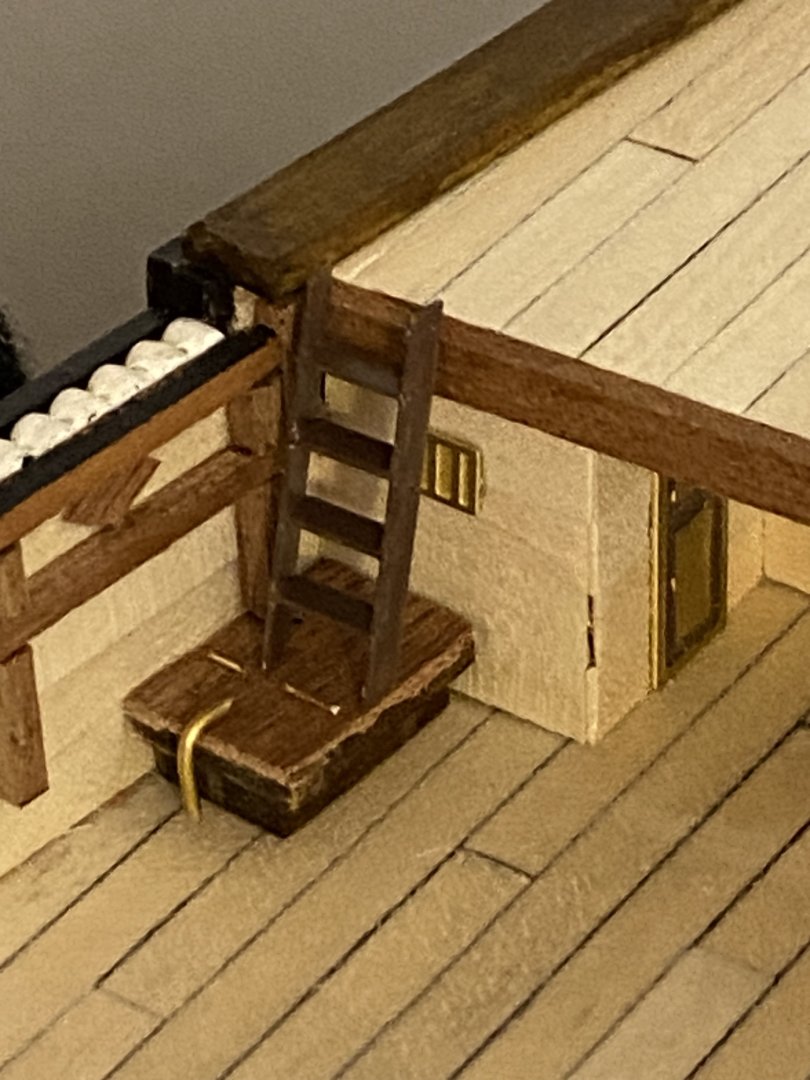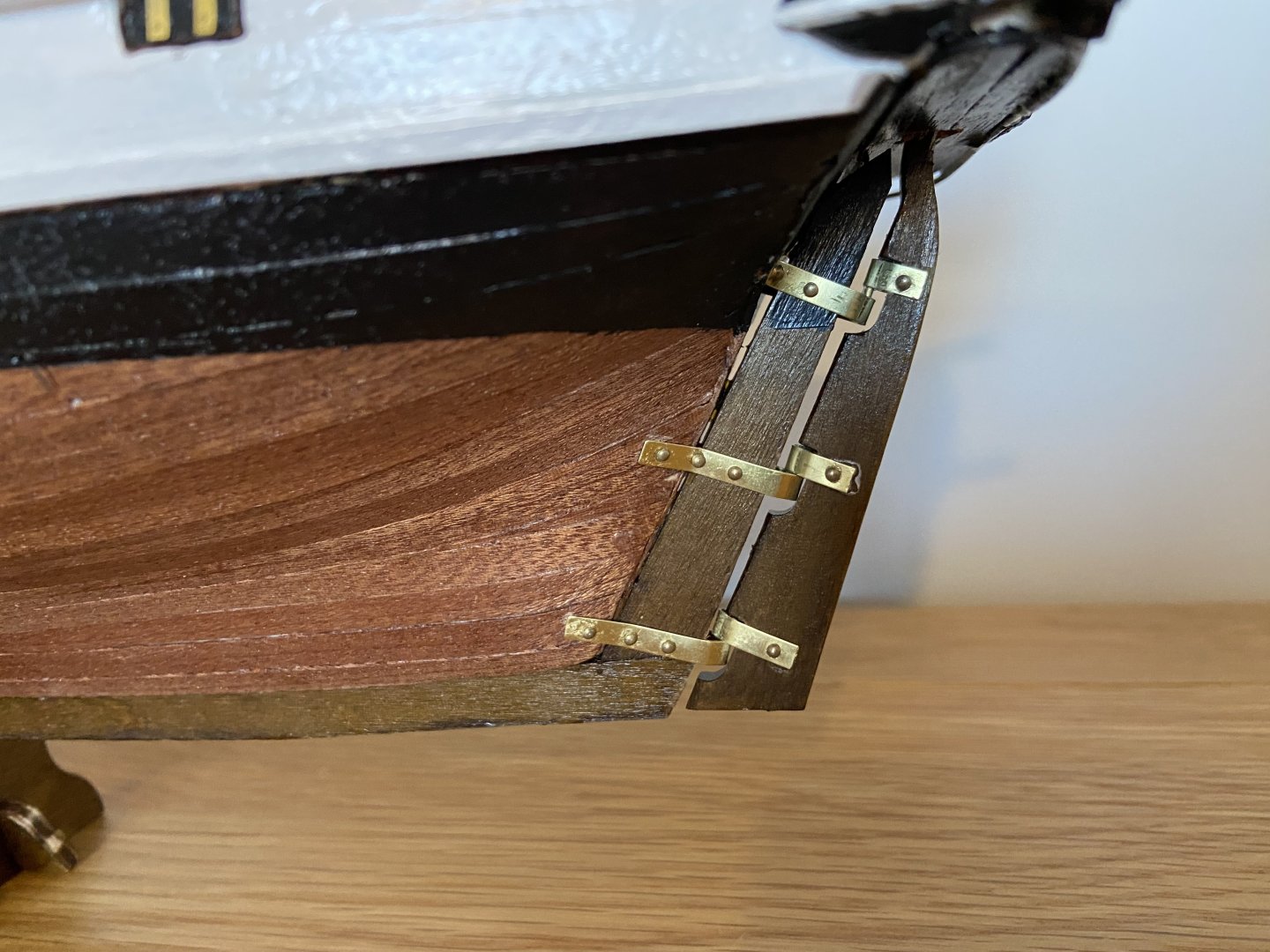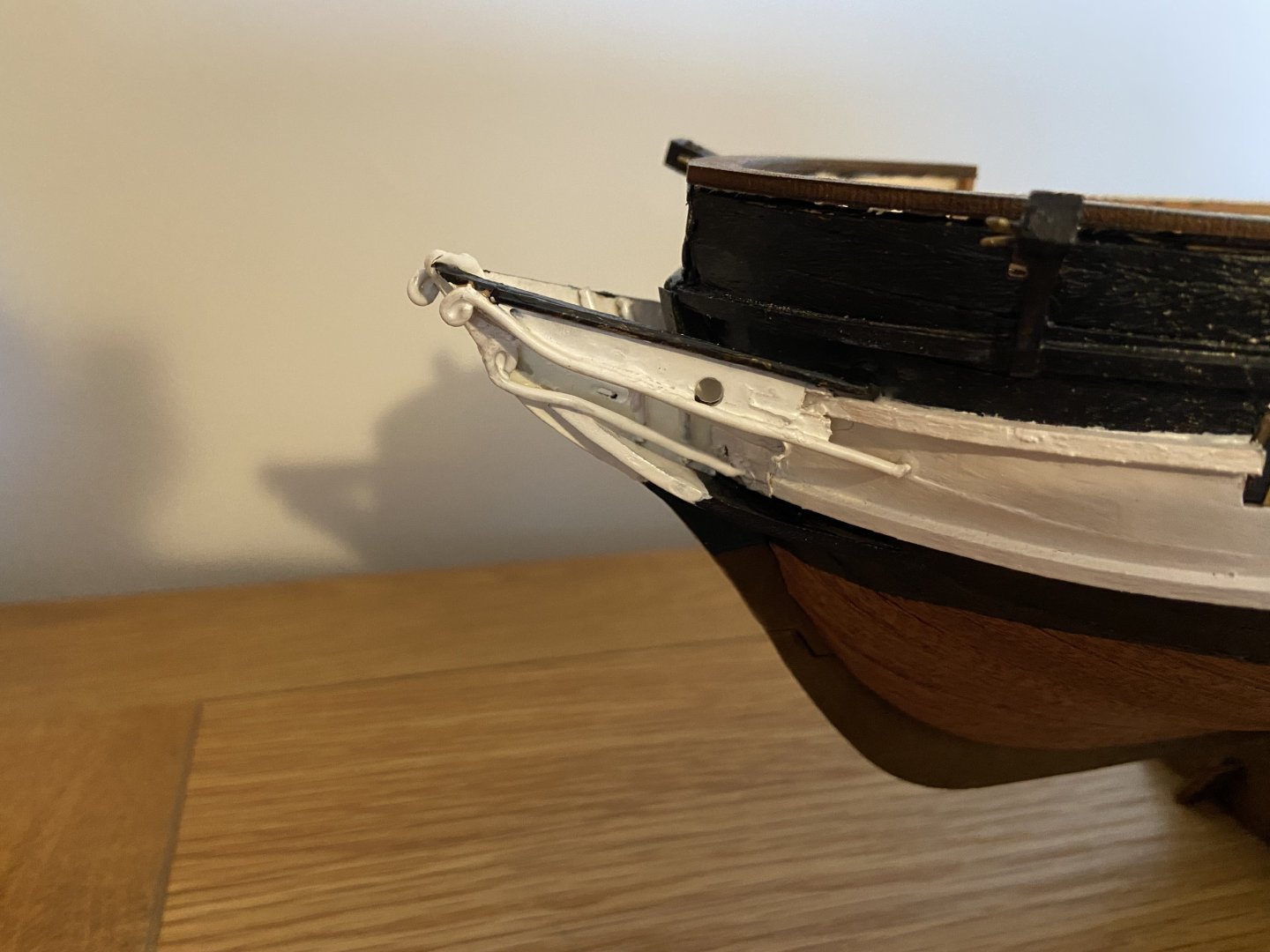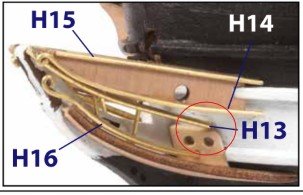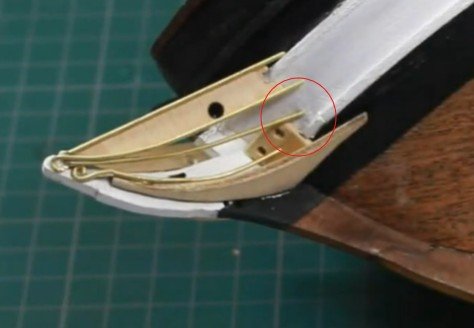-
Posts
59 -
Joined
-
Last visited
Profile Information
-
Location
West Sussex, England
Recent Profile Visitors
The recent visitors block is disabled and is not being shown to other users.
-
 Nirvana reacted to a post in a topic:
HMS Beagle by Tecko - OcCre - 1:60
Nirvana reacted to a post in a topic:
HMS Beagle by Tecko - OcCre - 1:60
-
 Tecko reacted to a post in a topic:
HMS Beagle by Tecko - OcCre - 1:60
Tecko reacted to a post in a topic:
HMS Beagle by Tecko - OcCre - 1:60
-
 vvvjames reacted to a post in a topic:
HMS Beagle by Tecko - OcCre - 1:60
vvvjames reacted to a post in a topic:
HMS Beagle by Tecko - OcCre - 1:60
-
 Maid of the Mist reacted to a post in a topic:
HMS Beagle by Tecko - OcCre - 1:60
Maid of the Mist reacted to a post in a topic:
HMS Beagle by Tecko - OcCre - 1:60
-
 Pitan reacted to a post in a topic:
HMS Beagle by Maid of the Mist - OcCre - 1:60
Pitan reacted to a post in a topic:
HMS Beagle by Maid of the Mist - OcCre - 1:60
-
 Tecko reacted to a post in a topic:
HMS Beagle by Maid of the Mist - OcCre - 1:60
Tecko reacted to a post in a topic:
HMS Beagle by Maid of the Mist - OcCre - 1:60
-
 Tecko reacted to a post in a topic:
HMS Beagle by Maid of the Mist - OcCre - 1:60
Tecko reacted to a post in a topic:
HMS Beagle by Maid of the Mist - OcCre - 1:60
-
 Tecko reacted to a post in a topic:
HMS Beagle by Maid of the Mist - OcCre - 1:60
Tecko reacted to a post in a topic:
HMS Beagle by Maid of the Mist - OcCre - 1:60
-
 Tecko reacted to a post in a topic:
HMS Beagle by Maid of the Mist - OcCre - 1:60
Tecko reacted to a post in a topic:
HMS Beagle by Maid of the Mist - OcCre - 1:60
-
 Tecko reacted to a post in a topic:
HMS Beagle by Maid of the Mist - OcCre - 1:60
Tecko reacted to a post in a topic:
HMS Beagle by Maid of the Mist - OcCre - 1:60
-
 Tecko reacted to a post in a topic:
HMS Beagle by Maid of the Mist - OcCre - 1:60
Tecko reacted to a post in a topic:
HMS Beagle by Maid of the Mist - OcCre - 1:60
-
 Maid of the Mist reacted to a post in a topic:
HMS Beagle by usedtosail - OcCre - 1:60
Maid of the Mist reacted to a post in a topic:
HMS Beagle by usedtosail - OcCre - 1:60
-
Took a short break from the jolly boat today and focused on finishing and fitting the anchors. The ship has four metal anchors, all of which had to be glued together, painted black and hung from the hull with different lengths of chain. Surprisingly, this ended up being one of the most frustrating parts of the build so far. I’m reasonably happy with how they turned out but I can’t shake the feeling that the anchors hanging off the sides interrupt some of the sleekness of the hull. What I’m less sure about is the actual prototypical setup: the two bow anchors make sense, since their chains run forward, inside the ship and would attach to the windlass. But the two positioned closer to midships aren’t connected to anything. If they were untied, they’d just drop straight into the sea. Were these meant to be spare anchors that would only be rigged properly when needed, or is this just a bit of inaccuracy from the Occre? Either way, the job is done. It took me about four hours to get all four anchors mounted. Tiny chains, deadeye bolts, bits of rope and surprisingly heavy metal anchors are not the easiest things to wrangle at this scale. But they’re on!
-
 Maid of the Mist reacted to a post in a topic:
HMS Beagle by Maid of the Mist - OcCre - 1:60
Maid of the Mist reacted to a post in a topic:
HMS Beagle by Maid of the Mist - OcCre - 1:60
-
The Beagle kit includes four small boats: a large cutter, a smaller cutter, the Captain’s whaleboat and the jolly boat. For now, I’m only working on the large cutter and the jolly boat. The other two will be mounted along the ship’s sides, and building them at this stage would get in the way of the rigging, so I’m saving those for the final stages of the build. The boats go together much like the larger Beagle hull, but they use a plank-on-frame approach instead of plank-on-bulkhead. The planking is done with 3mm limewood, and since the inside surfaces remain visible, I chose to stain the wood before installing any planks. As you can see, my planking skills still need a bit of refinement, but I wasn’t too worried, this particular boat was to be painted white, so any small gaps would be easily filled before painting. I applied three coats of white acrylic to the underside of the boat. The photo shows how it looked after the second coat. Once the planking was complete, I removed the boat from its base and moved on to the interior work, which involves some internal planking and fitting the various seats. Despite my efforts to align them with the frames, the seats ended up slightly off, most likely because the frame itself had a very subtle twist. Even so, I’m pleased with how it’s coming together. The level of detail you can achieve with this type of small boat is surprisingly good. I know it isn’t perfectly to scale, and higher-end kits often use 3D-printed hulls for greater accuracy, but I really enjoy the craftsmanship involved in building this one. Here we have the finished cutter, alongside the jolly boat frame. And the cutter mounted onto the Beagle deck:
-
Thank you for your kind words 🙂 The deck and hull are now close to completion in terms of added details. I have placed all of the cannons. Each one was tied down following the kit instructions. Nothing historically accurate of course, but the combination of simple knots and a bit of rope twisting gives them a convincing, tidy look for display. They add a lot of character to the deck. There is also the large stern support beam running across from one side of the ship to the other. I also assembled the small deck huts. These were surprisingly intriate little builds. I'm still not entirely sure what the real structures were used for. Certainly they're too small for a real person sit in. I assume they served as storage for equipment and tools. I also completed the boat supports towards the front of the ship. This prepares the way for the upcoming task of assembling one of the four (!!) little boats that come with the kit. They will be fiddling work, but they should look great. At the bow, I installed the figurehead. It sits nicely and I think the natural colours I used work well with the model overall. At the stern, the rudder chains are added: Aside from the small boats and the anchors, the main structure of the ship is essentially done:
-
At the front of the ship, I put together the carronade, which went together quite easily. I went with lots of black paint and added a touch of walnut stain to the wood. As for the cannon itself, I decided to keep it simple and paint it entirely black. The official instructions suggest painting it black and then dry brushing with copper for a bit of shine, but I preferred the plain look, it feels cleaner. Next up was the windlass.. This turned out to be a fairly intricate assembly, featuring a large metal piece that I painted with ochre, copper and black. It also involved some tricky wire bending, and the entire assembly had to be inserted and glued as one piece since it stretches from one side of the ship to the other. Aligning it correctly was a bit challenging, but I’m about 90% happy with the result. I really enjoyed wrapping the chain around the windlass, presumably simulating the anchor chain. Watching the chain weave through the deck is a surprisingly satisfying visual effect, and I think it looks really cool. At the rear of the ship, I assembled the depth winch, mostly following the instructions. I left some parts as polished brass and painted the rest black. It was a fiddly little assembly, but I was happy with how it turned out and had no trouble gluing it in place. And now for the part that almost every model ship builder loves: the cannons. Like the carronade, I painted the main cannons plain black, and for the gun carriages, I went with a simple walnut stain to give them a natural wood appearance. I’m not entirely sure whether cannon carriages from this period would have been painted red, I suspect they probably were, but I’ve mostly been building this model for enjoyment rather than strict prototypical accuracy. If I were really focused on authenticity, a lot of the polished brass on the ship would have been painted black anyway, so leaving the carriages as stained wood feels fine to me. I did think about adding red for a bit of visual interest on the deck, but I worried it might look a little toy-like, so I stuck with the walnut stain for a more classic, realistic wood look. Current state of play: I've decided to skip ahead a few steps and tackle the figurehead, using this little chap as a reference photo. There don’t seem to be any records of what the HMS Beagle’s figurehead actually looked like, but a bit of research helped guide my approach. By the time Beagle was built, the Royal Navy had moved away from the elaborate, gilded figureheads of earlier decades, opting instead for more realistic designs. I'm taking took my time painting a Beagle in tricolour style.
-
I have a quick question for anyone with knowledge about gun carriage colours. From what I’ve read, Royal Navy gun carriages of this era were often painted a brick red, which would add a nice bit of colour contrast to the deck. I kind of like that idea, it feels more authentic and visually interesting. What do you guys think? Any recommendations for the particular colour? Humbrol No. 100 Red Brown perhaps?
-
 Maid of the Mist reacted to a post in a topic:
HMS Terror by Greg Davis - OcCre - 1:75 scale
Maid of the Mist reacted to a post in a topic:
HMS Terror by Greg Davis - OcCre - 1:75 scale
-
I spent quite a bit of time working on the quarterdeck this past week — all of it very enjoyable. The rudder wheel and binnacle are metal parts that turned out nicely with a coat of dark brown acrylic. I added a touch of gold dry brushing to the wheel to give it a subtle shine, as I imagine it might be the only part of the ship finished with a bit of gloss varnish. Gluing the wheel in place proved tricky, since it sits tucked beneath the quarterdeck and tends to tip forward due to its weight. It’s not perfectly centered, but I doubt the King needs to know his ship is being built by an inexperienced craftsman. I also found the use of rope for the handrails quite interesting. I wonder if that’s realistic? In any case, it probably doesn’t matter much, as there will be boats on either side of the quarterdeck once the kit is complete. Current progress:
-
Chain plates are all finished now. I've moved on to making tiny little ladders. More experienced modellers seem to dislike that these parts are made of PE brass rather than wood, but I think they look good once painted with a bit of dark brown acrylic. Nice clean edges. My “gateway drug” to model ships was book nooks, and I’ve always loved the feeling of putting together a miniature world, which is what you get with deck furniture!
-
 Maid of the Mist reacted to a post in a topic:
HMS Terror by Greg Davis - OcCre - 1:75 scale
Maid of the Mist reacted to a post in a topic:
HMS Terror by Greg Davis - OcCre - 1:75 scale
-
Fairly decent progress. I fit the rudder, the most challenging part of the process turned out to be cutting the nails down to a suitably small size and then gluing them into the pre-drilled holes without creating too much of a mess with the super glue. Judging from other builders’ logs, this seems to be a fairly common headache, regardless of kit, so it’s nice to know I’m not the only one who wrestled with it. I also finished up the bow decorations, which turned out to be a fairly enjoyable task overall. The 1.5 mm brass wire was easy enough to work with, though the real challenge came when trying to get both sides to look identical, which I failed at rather miserably. That said, I’m not too concerned, since only one side of the ship will ever be visible when on display. So if one side looks a little different, no one will ever know… apart from me. In hindsight, I think using laser-cut wood, as some manufacturers do, would be a preferable approach here. It’s a bit more precise than trying to get artistic with metal wire. Still, I really enjoyed the painting aspect, lining everything up with the black and white stripes on the hull was quite satisfying, and it gives a lovely sense of continuity across the whole ship. I made slow but steady progress on the gun ports. These tiny wooden squares were cut from the gunwales, then veneered front and back, painted black, varnished, and fitted with four pieces of PE brass each. A very fiddly job, especially since every tiny brass piece needed a slight trim to fit properly. The instructions seem to suggest applying a black wash over the brass, but not feeling confident, I skipped that. The bright metal adds a nice bit of contrast and visual interest, and since this build is more decorative than strictly accurate, I don’t mind a touch of shine. You can see I've also made a start on the chain plates. I absolutely love adding these. So much visual interest and three dimensional detail....
-
 Maid of the Mist reacted to a post in a topic:
HMS Beagle by Maid of the Mist - OcCre - 1:60
Maid of the Mist reacted to a post in a topic:
HMS Beagle by Maid of the Mist - OcCre - 1:60
-
Attaching the prow adornments gives me another opportunity to have a quick moan about OcCre's dodgy instructions 😆 See below the attachment location for H13, as per the paper instructions. Then the same step in the YouTube tutorial: The attachment location of that piece matters for the vertical supports. Only a minor adjustment, but it means yet again having to detach and rework pieces I've already done! That said... I've found the wire bending at the prow to be quite enjoyable 🙂 It's much thicker wire than used at the stern, so it doesn't lose it's shape easily.
About us
Modelshipworld - Advancing Ship Modeling through Research
SSL Secured
Your security is important for us so this Website is SSL-Secured
NRG Mailing Address
Nautical Research Guild
237 South Lincoln Street
Westmont IL, 60559-1917
Model Ship World ® and the MSW logo are Registered Trademarks, and belong to the Nautical Research Guild (United States Patent and Trademark Office: No. 6,929,264 & No. 6,929,274, registered Dec. 20, 2022)
Helpful Links
About the NRG
If you enjoy building ship models that are historically accurate as well as beautiful, then The Nautical Research Guild (NRG) is just right for you.
The Guild is a non-profit educational organization whose mission is to “Advance Ship Modeling Through Research”. We provide support to our members in their efforts to raise the quality of their model ships.
The Nautical Research Guild has published our world-renowned quarterly magazine, The Nautical Research Journal, since 1955. The pages of the Journal are full of articles by accomplished ship modelers who show you how they create those exquisite details on their models, and by maritime historians who show you the correct details to build. The Journal is available in both print and digital editions. Go to the NRG web site (www.thenrg.org) to download a complimentary digital copy of the Journal. The NRG also publishes plan sets, books and compilations of back issues of the Journal and the former Ships in Scale and Model Ship Builder magazines.


